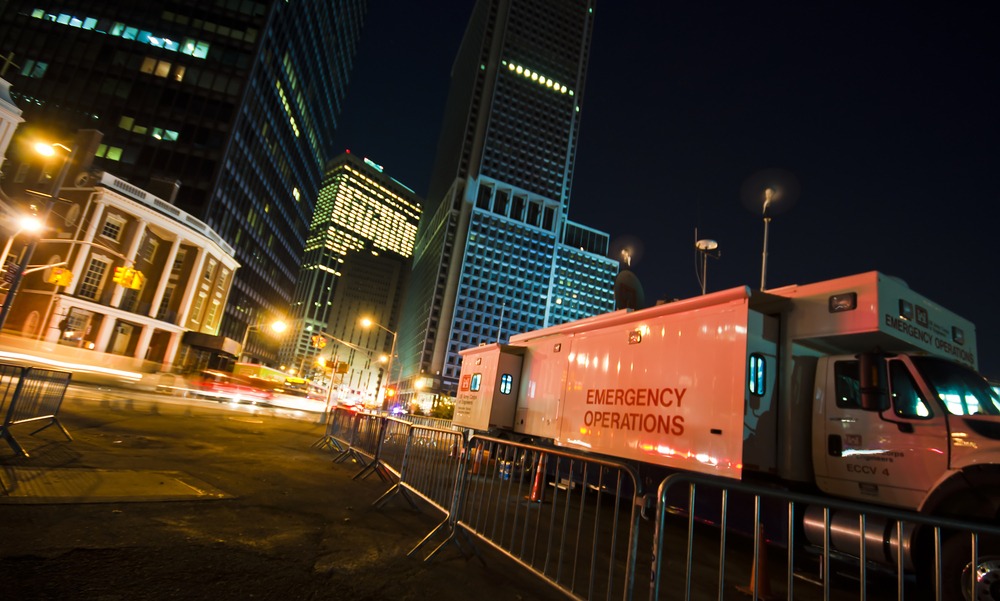
August 18, 2015, New York Times
Nearly three years after Superstorm Sandy hit the metropolitan area and the topic began to be discussed at NPQ—from immediately after the storm through the last anniversary—issues with funding for victims remain. The newest wrinkle comes from the Federal Emergency Management Agency’s admission of irregularities.
David Chen, in the New York Times this week, looked at the number of people who have filed for reassessment of the damage their homes incurred during Superstorm Sandy. After homeowners complained, and after various news stories came out about the revelations that the insurers altered engineers’ damage reports, FEMA invited all flood insurance policyholders to ask for a review of their cases, excluding those already in litigation (about 2200, some of whom have settled). One hundred and forty-two thousand people filed claims for flood damage, but only 11,000 have asked for a review, leaving advocates and elected officials deeply concerned.
Some may wonder how homeowners could leave dollars on the table. Perhaps a look at some of the “red tape” will help. Keep in mind that most of this paperwork was filled out under stress, both the sort that immediately follows a disaster and the kind that balloons months and years later when the situation has still not been resolved.
After the storm, a homeowner typically called the company that handles their homeowner’s policy (and their flood insurance company, if they had any) and signed a simple form. Subsequent to that, when the insurance claim check arrived and was not enough, the homeowner went to the NY Rising Community Reconstruction Program (NYRCR). That process, for the approximately 14,000 who applied, started with an online application. After that, forms started coming at them, all needing to be read, filled out, and signed:
- Right-of-Entry Permit and Release (to inspect the damage)
- Program Eligibility Certification Form
- Subrogation and Assignment Agreement
- Consent and Release for Nonpublic Personal Information
- Certification of Income of Property Owner
- Income Verification Form
As an example, a $20,000 repair generated at least 240 sheets of paper between directions and actual forms.
Sign up for our free newsletters
Subscribe to NPQ's newsletters to have our top stories delivered directly to your inbox.
By signing up, you agree to our privacy policy and terms of use, and to receive messages from NPQ and our partners.
Then, they got the NY Rising ECR (Estimated Cost of Repair) statement, followed by the award letter. NY Rising had to be informed of the amount of any insurance claims homeowners received because they deducted that from the ECR. That avoids the dreaded Duplication of Benefits, which is not permitted. If they disputed the finding, or the house consequently had to be demolished because guidelines changed midstream, there were more forms for those steps and a 6100 form from an architect, not to mention building permit forms for the town or village. And then they waited for replies.
Complications often arose, as well—for instance, deeds with names on them of people who are no longer alive. Or people, such as the case of relatives on the deed with an ax to grind, who just won’t sign off on the NY Rising paperwork. Everything could come to a standstill due to the lack of a signature.
Now, if the homeowners were living paycheck to paycheck without any savings, how could they replace the destroyed furniture, or the elevator for a disabled child when the house is elevated? On Long Island, they may have gotten a Disaster Case Manager (DCM) from one of a handful of nonprofits and faced more red tape. They’d fill out more applications, along with a budget form, and dig up more receipts to go to the place of last resort for disaster recovery: the Unmet Needs Roundtable.
The Unmet Needs Roundtable (UNR) on Long Island is based at the Health & Welfare Council of Long Island. The nonprofit has housed the Long Term Recovery Group, the Disaster Case Managers’ training, and many of the philanthropic dollars that were donated to the Sandy Disaster relief. Every Tuesday since June of 2013, DCMs have brought individual cases to the volunteers around the table to fill in the gaps for the victims. If the homeowners were able to cover the repairs with insurance and NY Rising but had no beds or chairs, the UNR assisted. The UNR has given out over 4 million dollars to date. Unfortunately, the homeowners often had to wait at that point, too. If the homeowner was or is waiting for NY Rising dollars, the UNR would be risking that agreement because of the Duplication of Benefits conundrum. The nonprofit dollars are only for actual needs that are outstanding, and the UNR volunteers around the table must answer to the requirements of the donors.
None of this is to say that money should just fly out without documentation. Forms and applications have their justifications, and each source, whether government or philanthropic donor, has a reasonable expectation that the money will be responsibly dispersed. The homeowner may understand that, but it does not assuage the application exhaustion.
To recap, insurance checks were issued first, then NYRCR, and then Unmet Needs Roundtable philanthropic dollars were issued for things that were not covered. Each step relies on the one before, interwoven like the most ornate tapestry. It is explicable, but torturous. If a homeowner files one of the new forms to reopen the insurance case with FEMA, it actuates the dreaded Duplication of Benefits piece and pulls on the red tape thread that holds it all together.—Marian Conway











